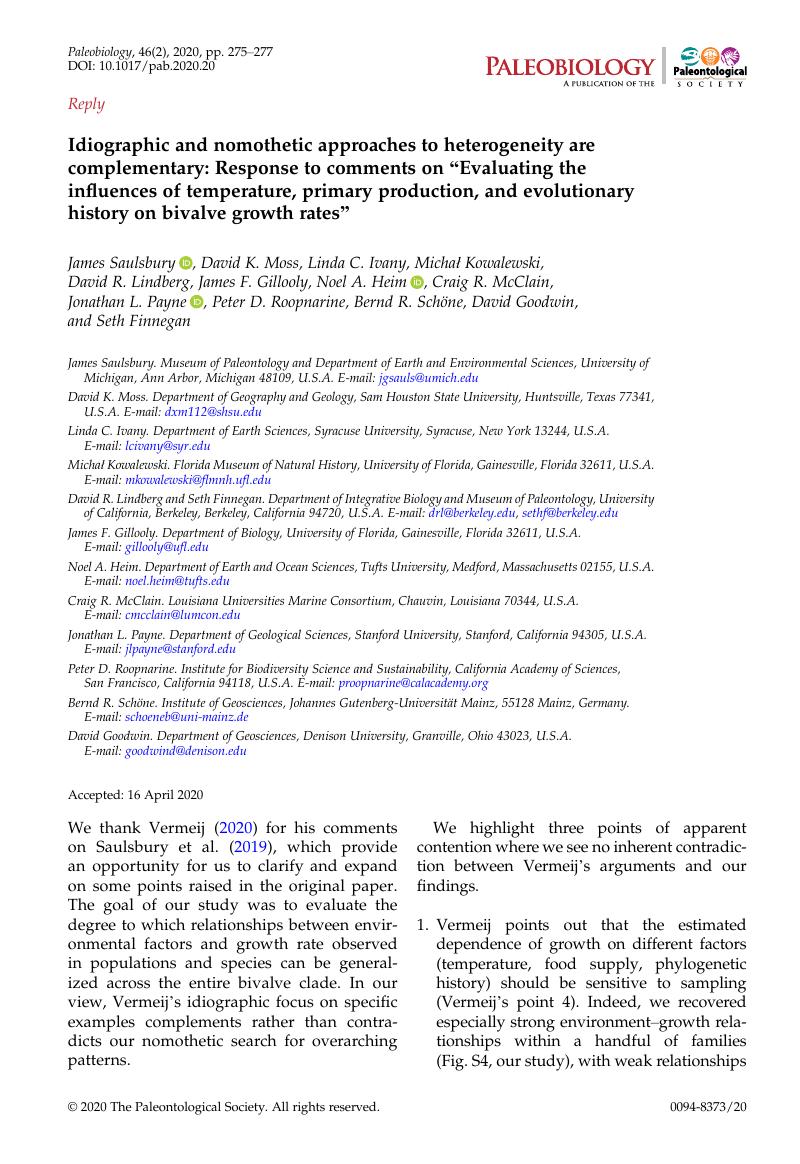No CrossRef data available.
Article contents
Idiographic and nomothetic approaches to heterogeneity are complementary: Response to comments on “Evaluating the influences of temperature, primary production, and evolutionary history on bivalve growth rates”
Published online by Cambridge University Press: 03 June 2020
Abstract
An abstract is not available for this content so a preview has been provided. Please use the Get access link above for information on how to access this content.

- Type
- Reply
- Information
- Copyright
- Copyright © 2020 The Paleontological Society. All rights reserved
References
Literature Cited
Roy, K., Hunt, G., Jablonski, D., Krug, A. Z., and Valentine, J. W.. 2009. A macroevolutionary perspective on species range limits. Proceedings of the Royal Society of London B 276:1485–1493.CrossRefGoogle ScholarPubMed
Saulsbury, J., Moss, D. K., Ivany, L. C., Kowalewski, M., Lindberg, D. R., Gillooly, J. F., Heim, N. A., McClain, C. R., Payne, J. L., Roopnarine, P. D., Schöne, B. R., Goodwin, D., and Finnegan, S.. 2019. Evaluating the influences of temperature, primary production, and evolutionary history on bivalve growth rates. Paleobiology 45:405–420.CrossRefGoogle Scholar
Vermeij, G. J. 2020. Bivalve growth and the invisible hand of heterogeneity. Paleobiology 46:272–274.CrossRefGoogle Scholar
Vladimirova, I. G., Kleimenov, S. Y., and Radzinskaya, L. I.. 2003. The relation of energy metabolism and body weight in bivalves (Mollusca: Bivalvia). Biology Bulletin of the Russian Academy of Sciences 30:392–399.CrossRefGoogle Scholar


